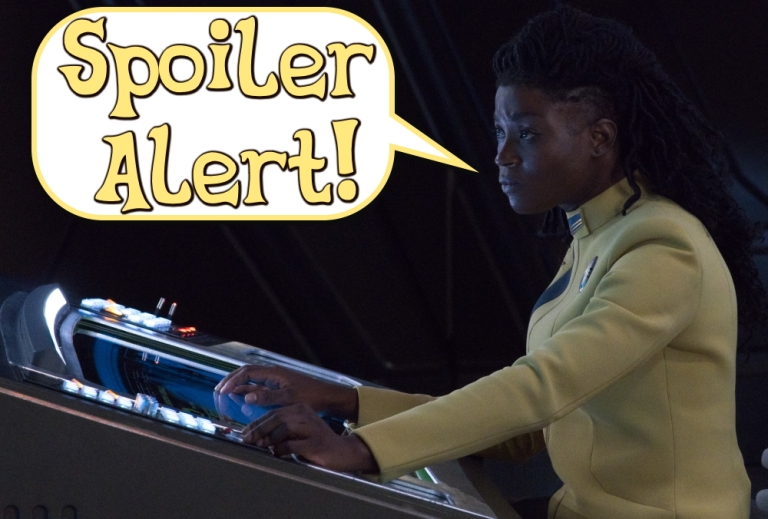
Spoiler Warning: There are spoilers ahead for Star Trek: Discovery Seasons 1-4, Star Trek: Picard Season 1, and for other iterations of the Star Trek franchise.
Now that all of the international broadcasting nonsense is out of the way, let’s get back into my weekly Discovery theory updates! We only missed one week, and there’s still a ton of speculating to be done about the story of Season 4, the gravitational anomaly, and what might become of some of our favourite characters.
If you’re new to my weekly theory updates for Discovery Season 4, here’s how the format works: after every episode I go back to my theory list. I cross off theories that have been debunked, celebrate any that appear to have been confirmed, update any that have seen progression, and add any new theories that the most recent episode has spawned. There will be some theories that, for whatever reason, the most recent episode didn’t advance in any way, so those will simply be restated to keep the list up-to-date and in one place!
I wrote up all of my pre-season theories into one list a couple of weeks ago, so this time we’ve already got two confirmations to take a look at before we jump into the main list.
Confirmed theory #1: The Spore Drive will be rolled out to more ships.
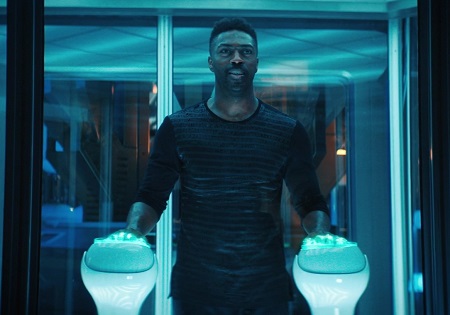
Finally! After the revelation in the Season 3 finale that Book – and potentially anyone else with similar empathic abilities – could control the Spore Drive, the last hurdle in the way of it being rolled out to other Starfleet ships had been surmounted. It finally feels like Discovery is on the cusp of finding another use for what had been one of the most controversial technologies introduced in the series.
In Kobayashi Maru this was almost treated as a throwaway line, so I wouldn’t blame you if you missed it, but President Rillak confirmed that a “next-generation” Spore Drive is being developed by Starfleet as part of the Federation’s plans to rebuild and expand. It wasn’t stated on screen, but I wonder if the USS Voyager-J might be fitted with a Spore Drive as part of its retrofit; the vessel was in spacedock, after all.

I’d been hoping that the series would go down this road for a while. Moving forward in time to the 32nd Century means there are no “canon purist” arguments in favour of abandoning the Spore Drive, keeping it a secret, or ensuring that only the USS Discovery could use it. And the events of the Season 3 finale seemed deliberately designed to create an easy way to expand the Spore Drive to more ships – perhaps even paving the way for future Star Trek productions in this era.
We don’t yet know what the implications will be of Kwejian’s destruction on Starfleet’s plans. It was implied in the Season 3 finale that anyone with empathic abilities could use the Spore Drive, not only Kwejian natives, so the loss of Kwejian and most of its population shouldn’t mean that the Spore Drive expansion has to be abandoned. It might be possible for Betazoids, Deltans, or even Vulcans to train to become Spore Drive navigators.
Confirmed theory #2: A new character joined the main cast.

Following the departures of Nhan and Georgiou, it felt like there was definitely scope to either promote a recurring character to the main cast or create at least one new one! We’ve met President Rillak, who seems like she’ll become a recurring character, but the one who’s been promoted to join the main cast is Blu del Barrio’s character of Adira.
Adira makes a great addition to Discovery’s main cast of characters, occupying a similar role to Tilly in Season 1 in particular. As Tilly has undergone significant character growth across the show’s first three seasons, there was scope to bring someone brand-new aboard the ship, and having that person be someone young and eager is a positive thing. Adira is not only involved in their own storyline with Gray and Dr Culber, but also as a scientist can work with Stamets, Tilly, Saru, and Captain Burnham. I think Adira has the potential to be a versatile character in whatever stories lie ahead.
My original version of this theory centred around the question of Captain Burnham’s first officer. Now that we know that role has gone to Saru, it seems as though the main and recurring characters for this season are set.
So those theories were confirmed. Now we’ll take a look at some new theories and a few updated theories.
Theory #1: President Rillak knows what the anomaly is… and may be responsible for its creation.

This ties into a broader point that we’ll be considering from several angles: the possibility that the gravitational anomaly is not a natural phenomenon. If the anomaly is artificial in nature, the question of who is responsible for its creation crops up. It could be a weapon deployed by another faction, of course, but it could also be a Federation creation – perhaps a weapon designed to defend against the Borg, a rogue experiment to try and prevent a second Burn, or something else entirely.
If that’s the case, President Rillak almost certainly knows more about the anomaly than she’s willing to say right now. Perhaps she’s hoping that it won’t be what she fears it is, or perhaps she’s trying to cover her own back – Captain Burnham did go out of her way to describe her as a “politician,” after all.
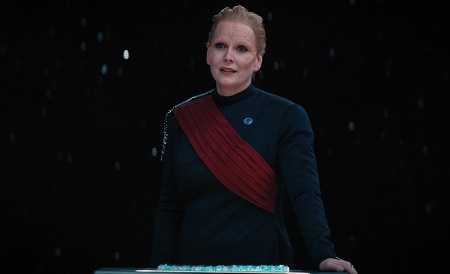
President Rillak is a character with depth, not simply an “evil admiral” character trope. But it wouldn’t be the first time that Discovery has presented us with a fairly hard-line character in a position of authority who turns out to be concealing a dark secret.
As the head of the Federation, President Rillak is committed to doing whatever it takes to preserve the organisation. The anomaly may have been part of those plans… somehow. If she isn’t responsible for its creation directly, she may still know what it is if a past Federation President signed off on its creation. She may be covering up that secret on behalf of the Federation.
Theory #2: Captain Burnham and/or the Red Angel time travel suits from Season 2 are connected to the anomaly.

Though we did see some moves away from Discovery’s laser-focus on Michael Burnham in Season 3, the show has put her front-and-centre in all of its main storylines so far. Season 2’s Red Angel storyline was connected to Burnham in a major way, and I wonder if Burnham might similarly have some kind of connection to the anomaly that she’s currently unaware of.
Perhaps the Red Angel suit, which Burnham sent back in time in the Season 3 premiere, malfunctioned somehow, and its powerful wormhole-creating technology gave rise to the gravitational anomaly. If the Red Angel suit completed its journey back to the 23rd Century, the anomaly may have had centuries to grow and expand unchecked.
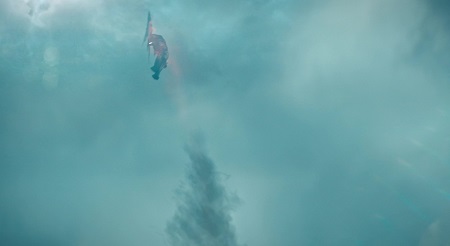
I’m not sure that this one is particularly likely, but as I said last year about a possible Burnham connection to the Burn, not only does Discovery kind of have a precedent for telling this kind of story, but there would also be something very dramatic about this revelation. In this case, Burnham would be indirectly and unknowingly responsible for creating something devastatingly damaging. How would she react to that, and how would Book react given what’s just happened to Kwejian?
If time travel is involved, perhaps a future Captain Burnham or a parallel universe Captain Burnham could be responsible for the anomaly’s creation – either intentionally or not.
Theory #3: Gray’s transfer to a new body won’t be simple.
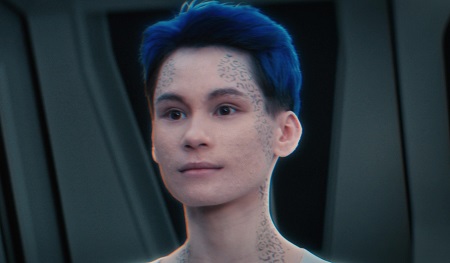
I adored the scene with Gray, Adira, and Dr Culber in Anomaly. As someone who’s struggled to come to terms with my own gender identity and my gender expression, it was so deeply relatable to see Gray “customising” his new body. But also included in that scene was a line from Dr Culber about how the “Soong method” used to transfer consciousness into a synthetic form has a very low success rate.
I suspect that line was included as a kind of pre-emptive plot hole plug that will have nothing to do with Gray! If the Soong method was said to work every time, then it would be very difficult to kill off any Star Trek characters from the 25th Century onwards, because fans would rightly ask “why didn’t they transfer to a synth body?” So I suspect that’s why the line was included.
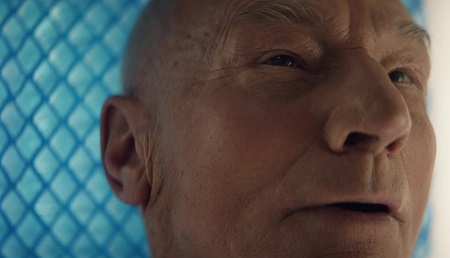
However, it felt a little ominous for poor Gray. It was great to see that Adira, Dr Culber, and others had been working hard to help Gray become seen again after the events of Season 3, and I have no doubt that somehow we’ll see Gray in a physical body before the season is over. But we’re only two episodes in at time of writing – will it really happen so quickly, and so seemingly simply?
I’m not convinced of that yet! There are many things that could go wrong, delay the transfer, or prevent it entirely. And there are an unlimited number of technobabble explanations for finding a new way to give Gray a body! So let’s see what happens – but I wonder if this storyline might have a few twists and turns along the way.
Theory #4: Book will find Kyheem and Leto inside the gravitational anomaly.
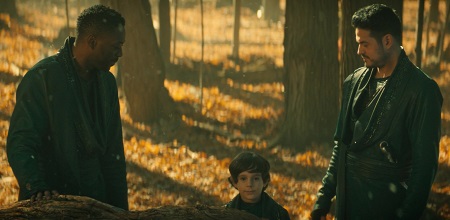
In Star Trek: Generations, Captain Picard encountered Captain Kirk inside the Nexus – despite Kirk being declared “dead” after the Enterprise-B encountered the energy ribbon. We don’t know what the gravitational anomaly is yet; one of my very early pre-season theories involved the Nexus, but that seems to be debunked already! However, the anomaly’s mysterious nature raises the faint possibility that at least some of those it appears to have “killed” may not be as dead as they first appear.
This theory is, I freely admit, a bit of a long-shot. And it hinges on a fundamental question underlying the story of the season: is there more to the gravitational anomaly than meets the eye? If the anomaly is just an extreme example of space weather, flitting through Federation space destroying anything unfortunate enough to be in its way, then probably everyone on Kwejian is dead. But if the anomaly harbours some kind of gateway, wormhole, portal, time vortex, or any of the other Star Trek-y technobabble phenomena that we’ve seen across the franchise’s history, then it’s possible that at least some of the folks on Kwejian found themselves transported to whatever realm lies inside of the anomaly.
Theory #5: The anomaly is a sentient life-form.
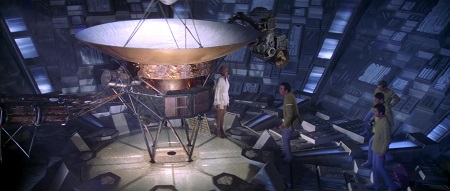
“It was only trying to communicate!” has become a Star Trek cliché, often used to describe how the seemingly-aggressive actions of an alien life-form are actually something innocuous. Perhaps the same is true of the gravitational anomaly: at its core is a life form, perhaps one not dissimilar to the Sphere seen in Season 2, and it’s on its own mission of exploration.
V’Ger from The Motion Picture is an interesting comparison. Like the gravitational anomaly, V’Ger was massive in size, capable of destroying space stations, fleets of ships, and even threatening to destroy entire planets. When Admiral Kirk and the crew of the Enterprise were able to figure out V’Ger, however, they found a life-form at its core, one which was just as curious to learn and grow as they were.
Theory #6: Saru will be given the captaincy of the USS Voyager-J.
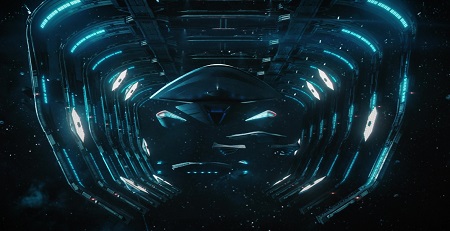
Saru’s future was briefly discussed before he offered to serve as Captain Burnham’s first officer. He has already been offered a command of his own, so Starfleet clearly values his command abilities and experience. President Rillak was seen to be assessing Captain Burnham’s suitability for the captaincy of the USS Voyager-J in Kobayashi Maru… and she mentioned having a shortlist of candidates. Could Saru be on her list?
At time of writing, a fifth season of Discovery hasn’t been officially confirmed. But if the show is to run for another season – or more – the question of Saru’s role comes up. It would be possible to work out a way to keep him on board as first officer for longer than one season, and in many ways I think that’s something fans would want to see. But at the same time, from an in-universe point of view, it kind of makes sense for Starfleet to use its experienced captains where possible.
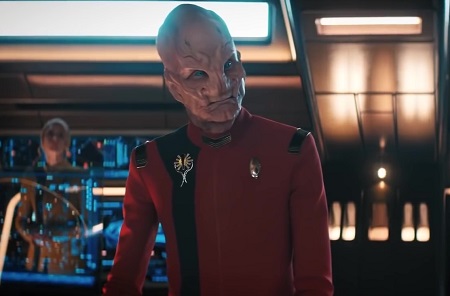
Several of the qualities that President Rillak said she was looking for in a potential captain seem to apply to Saru. He’s more level-headed, less likely to put himself in a dangerous situation, and more inclined to think of the big picture. He has a weakness when it comes to Kaminar, as we saw toward the end of Season 3, but generally speaking he isn’t someone who lets his emotions get the better of him. His wisdom and calm demeanour could be valuable in the captain’s chair of the Federation flagship.
If Saru did depart Discovery in a future episode or season, could that perhaps set the stage for Star Trek: Saru… or perhaps Star Trek: Voyager-J? That’s a very interesting possibility! One element of Season 3 that I felt didn’t really get as much attention as it might’ve was that Saru was the Star Trek franchise’s first non-human captain (in a leading role). There’s perhaps scope to follow him on another adventure sometime in the future.
Theory #7: The gravitational anomaly is a superweapon.

We touched on this theory above when we considered the Federation’s possible complicity in the creation of the gravitational anomaly, but there are many other ways such a story could pan out. The anomaly’s unpredictable nature, as noted by Tilly and Saru at the end of Anomaly, could imply that there’s an intelligence at work, perhaps dictating the anomaly’s moves. This could be the anomaly itself as suggested above, but it could also be the case that the anomaly is being controlled or manipulated by something or someone externally.
If the anomaly turns out not to be a natural phenomenon, and is indeed deliberately targetting the Federation, who might the possible culprits be? And what would be the purpose behind attacking the Federation in this manner? If it’s the precursor to an invasion, perhaps later in the season we’ll see whoever is responsible making their next move.
Theory #7a: The Borg are responsible.
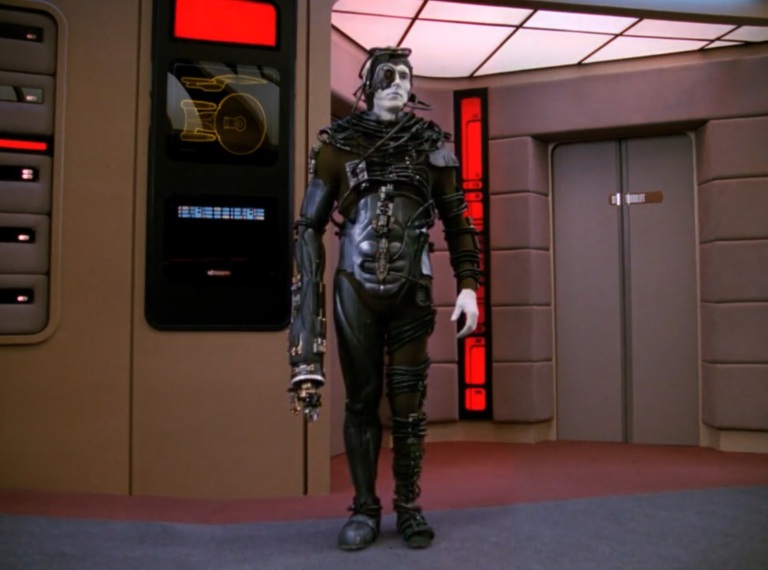
We don’t know whether the Borg Collective still exists in the 32nd Century; it hasn’t even been mentioned since the USS Discovery’s arrival. However, out of all of the factions in Star Trek, few seem capable of creating a weapon on the scale of the gravitational anomaly. This wouldn’t be in line with the Borg’s usual modus operandi, as they prefer to assimilate rather than attack from afar. But a lot may have changed in the centuries since we last encountered them, meaning this could be the opening salvo of a Borg attack… or the last gasp of a dying Collective.
Theory #7b: The super-synths from Picard Season 1 are responsible.
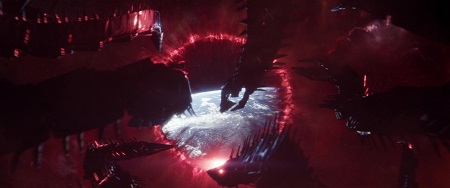
We still don’t know very much about the super-synths that Soji and Sutra attempted to contact in the Season 1 finale of Star Trek: Picard. Other than claiming to offer support and help to synthetic life, what are their goals and motivations? Was their offer even genuine, or was it a trap? The mechanical tentacles glimpsed in Picard Season 1 looked terrifying! Moreover, we know that the super-synths have the technology to move stars – something only possible with an advanced understanding of gravity. Creating a stable 8-star octonary system is an incredible technological and gravitational feat, so they have precedent of a sort when it comes to working with gravity.
Theory #7c: The Kelvan Empire is responsible.

This one might seem to come completely out of the blue! In The Original Series, Captain Kirk met representatives of the Kelvan Empire, a faction originally from the Andromeda galaxy. Seeking a new home, a Kelvan scouting party had reached the Milky Way and were looking for worlds to conquer. Kirk would ultimately dispatch an unmanned starship offering to help the Kelvan Empire find new worlds to settle – but what if his offer was rejected? Given the vast distances involved, the timelines kind of line up for the Kelvan Empire to return to the Milky Way.
Theory #7d: The Sphere-Builders from Enterprise are responsible.
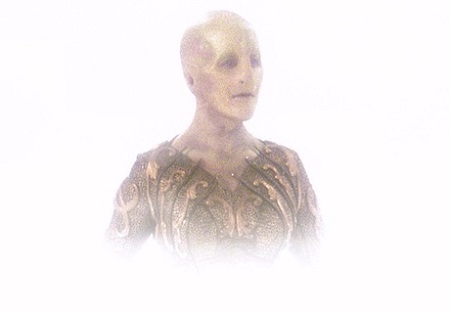
A defeated faction in one of the Temporal Wars, the Sphere-Builders initially hoped to convert a large swathe of the Alpha Quadrant to match their native extradimensional realm, and constructed a number of large space stations known as Spheres to facilitate this transformation. Crewman Daniels would tell Captain Archer that the Sphere-Builders were defeated in the 26th Century, but could they have since rebuilt? The gravitational anomaly isn’t necessarily the same as what they were trying to do with the Spheres, but they’re one of the few factions in Star Trek that might be capable of creating a weapon on this scale.
So those theories were new or saw some advancement in the first two episodes of the season.
To keep these theory posts as uncomplicated as possible, I like to keep all of my theories in one place. So below you’ll find all of my other Season 4 theories. These weren’t debunked or confirmed in the first two episodes, and indeed saw no real movement at all. They remain in play, though.
Theory #8: A major character will be killed.
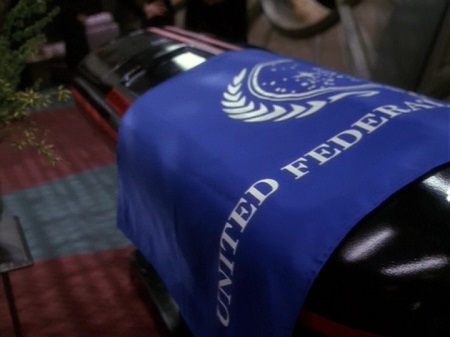
Season 3 saw a couple of major departures: Mirror Georgiou entered the Guardian of Forever’s portal, and Nhan remained behind aboard the USS Tikhov. Yet despite the dangers the crew faced as they navigated the 32nd Century, battled the Emerald Chain, and figured out the mysteries of the Burn and the Verubin Nebula, only one ally – Ryn – lost their life.
Killing off a character can be an excellent way to communicate the stakes involved if it happens at a relatively early stage. It can also be a storyline that brings a lot of emotion, as we have to say goodbye to a beloved member of the crew.
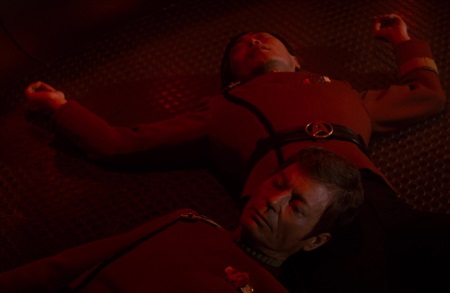
In short, I think there are plenty of reasons on the production side why killing off a major character could make sense in Season 4. Discovery has seen a number of characters leave the series – far more than any past Star Trek show, in fact – but the series’ death toll is still relatively low when compared to many other modern television shows.
There are also a couple of characters who feel in danger for different reasons. For a full breakdown of which characters I think might be on the proverbial chopping block, check out my list of “death predictions” by clicking or tapping here.
Theory #9: There will be a character crossover from a past iteration of Star Trek.
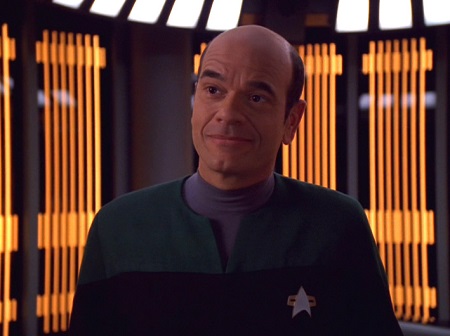
Yes, I’m officially bringing this theory back! This is one that I doggedly clung to for all of Season 3, and while it arguably kind of happened with the Guardian of Forever, that wasn’t really what I meant.
The show’s 32nd Century setting has shot Captain Burnham and the crew far beyond anything in Star Trek’s established canon, and that should mean that practically everyone we remember from other Star Trek shows won’t be around any longer. But this is Star Trek – with some creatively-written technobabble, practically any major character could have survived all the way through to the 32nd Century!

It’s also possible for Captain Burnham to discover the logs of a long-dead officer; someone we as the audience would be familiar with. While this would be less of a “crossover” than if a character from the past could be physically present, it would still be a lot of fun to see!
There are a handful of characters who could have survived to the 32nd Century based on what we know about them from past iterations of the franchise. Included in this category would be people like Soji, Voyager’s Doctor, and a few others. But as we’ve seen in episodes like Relics and even the film Generations, all it would take to make a big crossover happen is some kind of temporal anomaly, stasis field, or other technobabble!
Theory #10: Burnham may not remain in the captain’s chair.
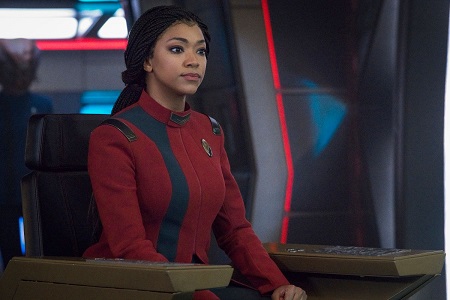
This is a controversial one, so let me just say up front that I’m neither in favour of this theory nor opposed to it – I just think it’s a possibility. As things stand, Discovery has had four different captains across its four seasons. One of the show’s unique points of interest within Star Trek’s broader canon are the very different ways in which these individual captains commanded the ship and crew.
It’s got to be considered at least a possibility, then, that the show will continue this trend. This doesn’t mean Captain Burnham will be killed off; I’d actually argue she’s pretty safe. But there are many different routes to her potentially leaving the ship, such as a desire for freedom that we saw in Season 3, or even perhaps taking up a new, more senior role within Starfleet.
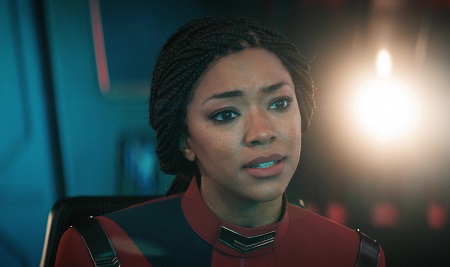
If this theory were to come to pass, it would be something I’d expect to see at the very end of the season. Even if Burnham seems 100% committed to her new role as captain, I don’t think it’s a theory we can definitively rule out.
It’s worth mentioning that at time of writing Discovery hasn’t been officially renewed for a fifth season – so all this talk of who’ll be in the captain’s chair by then could be moot! And of course this theory has a very strong counter-argument: that Discovery’s main story arc across its first three seasons can be read as Burnham’s ascent to the captain’s chair.
Theory #11: Kovich works for Section 31.
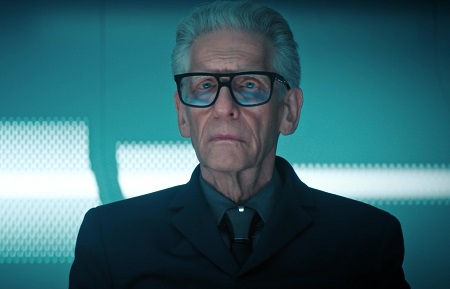
This is another Season 3 theory that I’m choosing to bring back! The question of who Kovich is and what role he played in Starfleet and the Federation was left open at the end of Season 3, and we know that the character will return in some capacity. As someone who seemed to talk around the issue at hand and not reveal everything he knew, Kovich strikes me as potentially being a Section 31 operative – or even the head of the organisation.
We don’t know yet if the Section 31 series that was announced in 2019 will go ahead as planned. But if it does, there could potentially be a connection between Kovich and Georgiou that would tie the two shows together. Kovich is mysterious enough that his character could be taken in many different directions – but my money’s on Section 31.
Theory #12: The ban on time travel will be explained further.

This one is a hope as much as a theory right now! In short, the ban on time travel was introduced early in Season 3 primarily as a way for the writers and producers to avoid questions about why the 32nd Century was so different from how the far future had been depicted in earlier Star Trek productions, as well as to explain things like how the Burn was able to catch the Federation off-guard and why Georgiou couldn’t simply be sent back in time when she needed to.
But the ban itself raises some issues – the biggest one being the lack of detail on how it works and how something like this could possibly be enforced. As I said several times last season, it isn’t possible to just un-invent a technology so useful and powerful as time travel. Even just a few lines of dialogue going into a little more detail on the mechanisms involved in the ban would be really useful.
Theory #13: The Federation has flouted the ban on time travel.

Sticking with the time travel ban, another theory I had last season was that the Federation – and Section 31 in particular – might have deliberately flouted the ban and failed to abide by the rules. Someone as straight-laced and committed to Starfleet ideals as Admiral Vance is highly unlikely to have sanctioned such a move, but someone like the shadowy Kovich (who we talked about a moment ago) might have. President Rillak could also be involved.
Obviously the bulk of the season’s story will deal with the gravitational anomaly. But there’s scope to either talk about the time travel ban in a standalone episode or even tie the two stories together – perhaps the anomaly has been unleashed as a result of unsanctioned time travel.
Theory #14: The story will connect with the Short Treks episode Calypso.
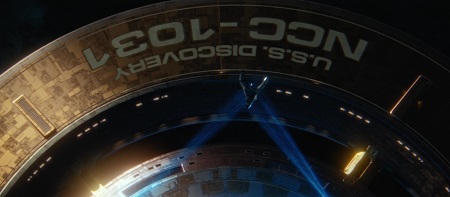
Despite a handful of moments in Season 3 which seemed to connect to Calypso, the story of the season overall ended up going in a very different direction. While we saw a couple of things that arguably did tie in to the Short Treks episode, major things like the USS Discovery undergoing a refit have actually moved the plot even further away.
It’s possible that Calypso will forever remain an outlier in Star Trek’s canon – an episode tied to a vision of Season 2 or Season 3 that was changed before it made it to screen. But earlier in Season 3 it felt like we were getting close to seeing how it could all be tied together – and I’m hopeful that Season 4 will find a way to do so.
Theory #15: The crew will have to defend the Verubin Nebula.
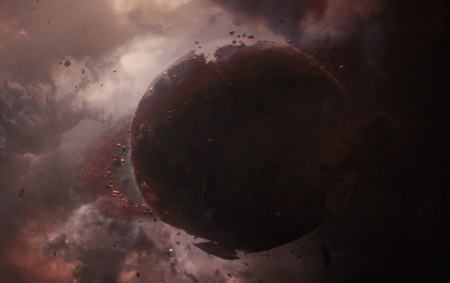
The Federation is in a weakened state, and even if we see worlds like Ni’Var rejoin the organisation it’s still nowhere near as powerful as it once was. The Verubin Nebula is thus a very tempting target for anyone looking to gain an edge in a galaxy where dilithium is still in short supply. As the only known significant dilithium supply, whoever controls the Verubin Nebula will have a massive tactical advantage.
We can compare the Verubin Nebula to Deep Space Nine’s Bajoran wormhole in that respect – it’s a resource of huge strategic importance. Season 3 didn’t show us much about the makeup of the galaxy’s factions outside of the rump Federation and the Emerald Chain, but it’s got to be possible that factions like the Dominion, Klingon Empire, or even the Borg still exist and would want to seize the Verubin Nebula for themselves.
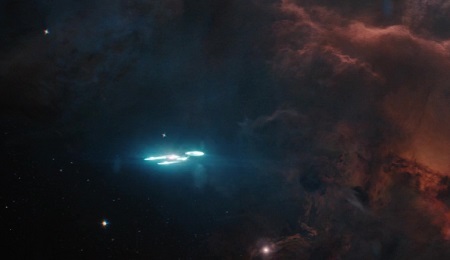
Season 4 has teased a scientific puzzle – the gravitational anomaly. But that doesn’t mean there won’t be villains in play, and Discovery has introduced us to several compelling and interesting villains over its first three seasons.
To make a long theory short, it would begin to stretch credulity to think that everyone in the known galaxy would see the Federation rebuilding and having access to dilithium and not want to find out for themselves what’s going on. Once the Verubin Nebula’s existence becomes known, even if the Federation promises to share its bounty with all comers, it seems very likely that someone would want to take control of the dilithium supply for themselves.
Theory #16: Captain Burnham and the crew will encounter the Klingons.
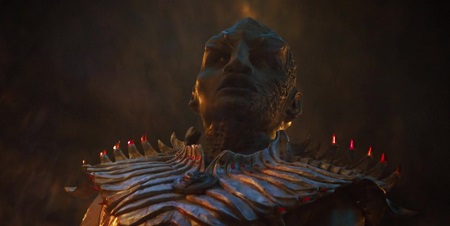
By the late 24th Century the Federation and Klingons were firm friends, having been allied for a century and after fighting side-by-side against the Dominion. We don’t know if that alliance endured to the 32nd Century, but it’s certainly plausible to think that it did. The Klingons might even have joined the Federation at some point, and their violent warrior culture may have been significantly pacified.
One thing that could be very interesting to see is how the crew of the USS Discovery – almost all of whom are veterans of the Federation-Klingon war – would respond to that. They’ve worked alongside Klingons like L’Rell before, but many of them still see the Klingons as an old enemy. The story of overcoming that prejudice could mirror episodes like The Wounded from The Next Generation, and would be very interesting to see.
Theory #17: Some areas of the galaxy – such as the Delta Quadrant – avoided the worst effects of the Burn.
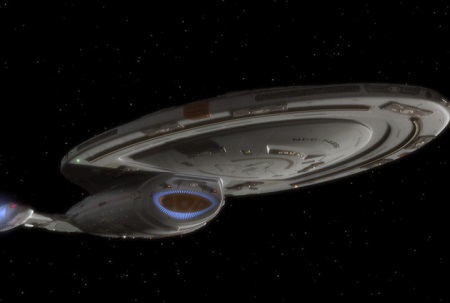
It’s quite possible that Season 4 won’t revisit the Burn narrative in any detail. But one thing I’d be curious to see is the true extent of the disaster – did it reach all four quadrants of the galaxy equally, or did its effects fade out after a certain point? Michael Burnham discovered that the Burn had a point of origin, and that it radiated out from that point like ripples on the surface of water. Ripples eventually diminish, fading away the further they travel, and perhaps that’s true of the Burn as well. There could be whole areas of the galaxy that didn’t even notice the Burn – and maybe the ship and crew will visit one such region.
If the Delta Quadrant was left largely unscathed, for example, what might that mean for the likes of the Borg? It’s possible they aren’t even still around in the 32nd Century, but it’s also possible that they’ve had more than a century to expand and build up their forces while the Federation suffered.
Theory #18: The Guardian of Forever will be back.

Having reintroduced the Guardian of Forever in Season 3, I wouldn’t be at all surprised to see Discovery return to the Guardian’s planet in Season 4. The gravitational anomaly is something new and threatening, so it’s possible Captain Burnham might want to ask the Guardian for help or information.
The Guardian of Forever is also the only way we know of at present to travel through time – something that might be necessary if Season 4 makes an attempt to link up with Calypso in a big way. There are many reasons why Captain Burnham might want to revisit the Guardian, and it would be great to bring back actor Paul Guilfoyle, who played the Guardian’s humanoid avatar in Season 3.
So that’s it! Those are all of the theories I currently have in play.
Stay tuned for weekly updates to this list after new episodes air! I try very hard to publish my theory updates in between episodes so that nothing is out-of-date! Season 4 is off to an exciting start – and there are plenty of mysterious elements to get stuck into.
Star Trek: Discovery Season 4 is available to stream now on Paramount+ in the United States, Scandinavia, Latin America, and Australia. The show is on Pluto TV in the UK, France, Germany, Italy, and other parts of Western Europe at 9pm on Fridays and Saturdays. Individual episodes or the full season can be purchased on iTunes, Amazon Video, and possibly other platforms in the UK, parts of Europe, and select other countries. The Star Trek franchise – including Discovery and all other properties mentioned above – is the copyright of ViacomCBS. This article contains the thoughts and opinions of one person only and is not intended to cause any offence.

